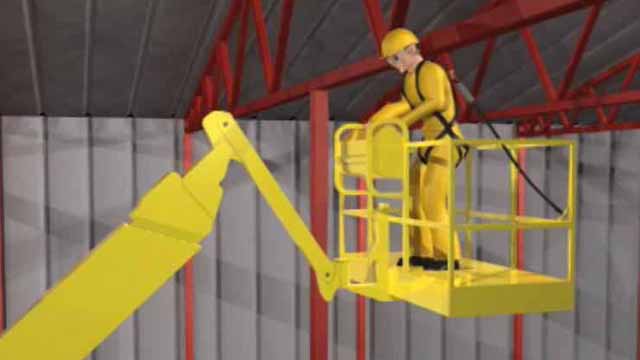
Anti-entrapment solutions
IPAF reminds industry of existing guidance
By International Powered Access Federation
No one single device will prevent all crushing and trapping accidents, and the basis for preventing such accidents must go together with appropriate training, adequate familiarisation, risk assessment, proper planning and management of work at height, says IPAF. The Federation’s reminder comes amid a move by several UK contractors to require the fitting of specific anti-entrapment devices to all telescopic booms on their sites.
IPAF reiterates that there is current best practice guidance on avoiding trapping/crushing, first published in July 2010 by the UK-based Strategic Forum for Construction Plant Safety Group, of which IPAF is a part. This guidance is endorsed by the Health & Safety Executive (HSE).
“Incidents could have been prevented by correct planning and preparation, selection of appropriate machinery and proper use,” writes Phillip White, HM Chief Inspector of Construction and Chair of the HSE Construction Industry Advisory Committee (CONIAC), in the foreword to the guidance, referring to crushing/trapping incidents that have happened. “The guidance is straightforward, comprehensive and easy to adopt… I commend the guidance to anyone who owns, supplies or controls the operation of MEWPs. Please read the publication and turn the advice into action.”
The guidance is available free, also in six European languages and in a US edition, at the Publications section of www.ipaf.org.
IPAF has also published guidance on the selection of anti-entrapment devices for MEWPs, available in different languages and at the Publications section of www.ipaf.org. This document reviews existing anti-entrapment devices and systems, and stresses that no one particular device will prevent entrapment in all known circumstances. In selecting a device or system to address a single hazard, consideration should be given to the potential for significantly increasing other possible hazards.
“IPAF’s members have been at the forefront of the debate about understanding and preventing entrapment incidents,” said IPAF CEO Tim Whiteman. “These initiatives have involved manufacturers, rental companies, contractors and safety authorities around the world. The recently launched PAL+ training course is designed to address work in high risk environments. IPAF’s accident reporting project is intended to collect data on the main causes of accidents and how to prevent them. While there is a risk of trapping/crushing when operating equipment, MEWPs still are one of the safest ways to work at height and entrapment risks should be addressed on all fronts, not just through the reliance on the fitting of specific devices.”
About the Author
IPAF is the parent organization of North America's Aerial Work Platform Training (AWPT). Both are not-for-profit member organizations that promote the safe and effective use of powered access equipment. Find more information at www.ipaf.org.


















